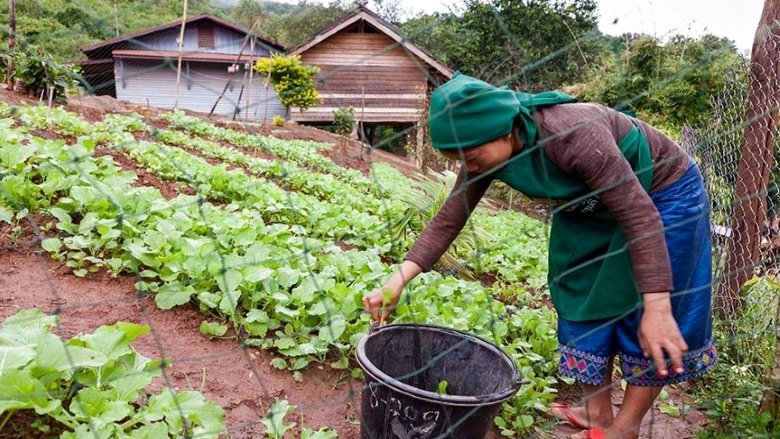Agriculture accounts for more than a fifth of the Lao PDR’s exports and has the potential to raise revenues and so drive poverty reduction. This study, which learns from the IDA-funded Agriculture Competitiveness Project and ongoing projects by the government and development partners, explores that potential, assessing the options for smallholder Lao farmers to join agricultural export value chains.
Experience shows that poverty declines faster in areas of Laos which are able to diversify their farming systems, adopt modern practices and market their products through regional value chains. This involves diversifying from subsistence rice cultivation to commercial production of cash crops. Most farmers in Laos are low-productivity smallholders, the majority of whom are poor. They face a wide range of challenges that affect their productivity and market participation, including lack of technology and inputs, declining soil fertility, and poor irrigation and drainage. Market access is hampered by high transaction costs and high transport costs, and women farmers face even greater challenges.
However, connective infrastructure is rapidly improving, as shown by the opening of the Laos-China Railway and the development of trade corridors with neighboring countries. This provides Laos with an opportunity to transform the country through infrastructure that fosters trade and integration. These trade linkages also represent an opportunity to develop high-value agricultural production and processing value chains by partnering with agro-processing firms along the economic corridors.
This report looks at smallholder access to transportation and logistics along the corridors to China, Thailand and Vietnam, and assesses the potential for Laos to increase its exports to each of those markets. Given the need for compliance with each market’s sanitary, phytosanitary and good agricultural practice requirements, the study analyzes those conditions and the capacity to meet them.
Analytical sections of the report:
- Regional connectivity and logistics
- Regional markets along the regional economic corridors
- Sanitary and phytosanitary compliance with regional markets and capacity constraints
- Agriculture export value chains – constraints to smallholder participation
- Conclusions and recommendations


